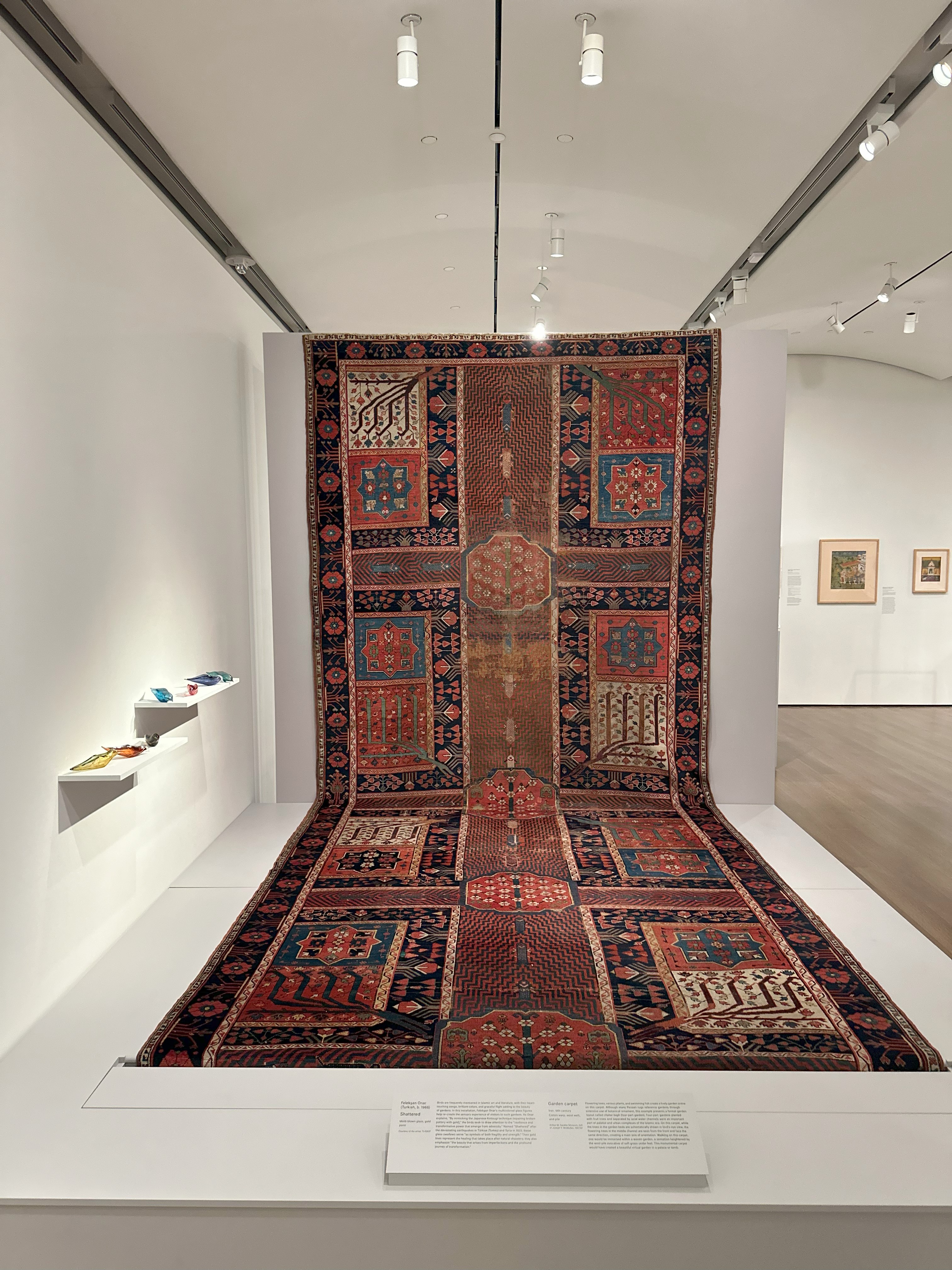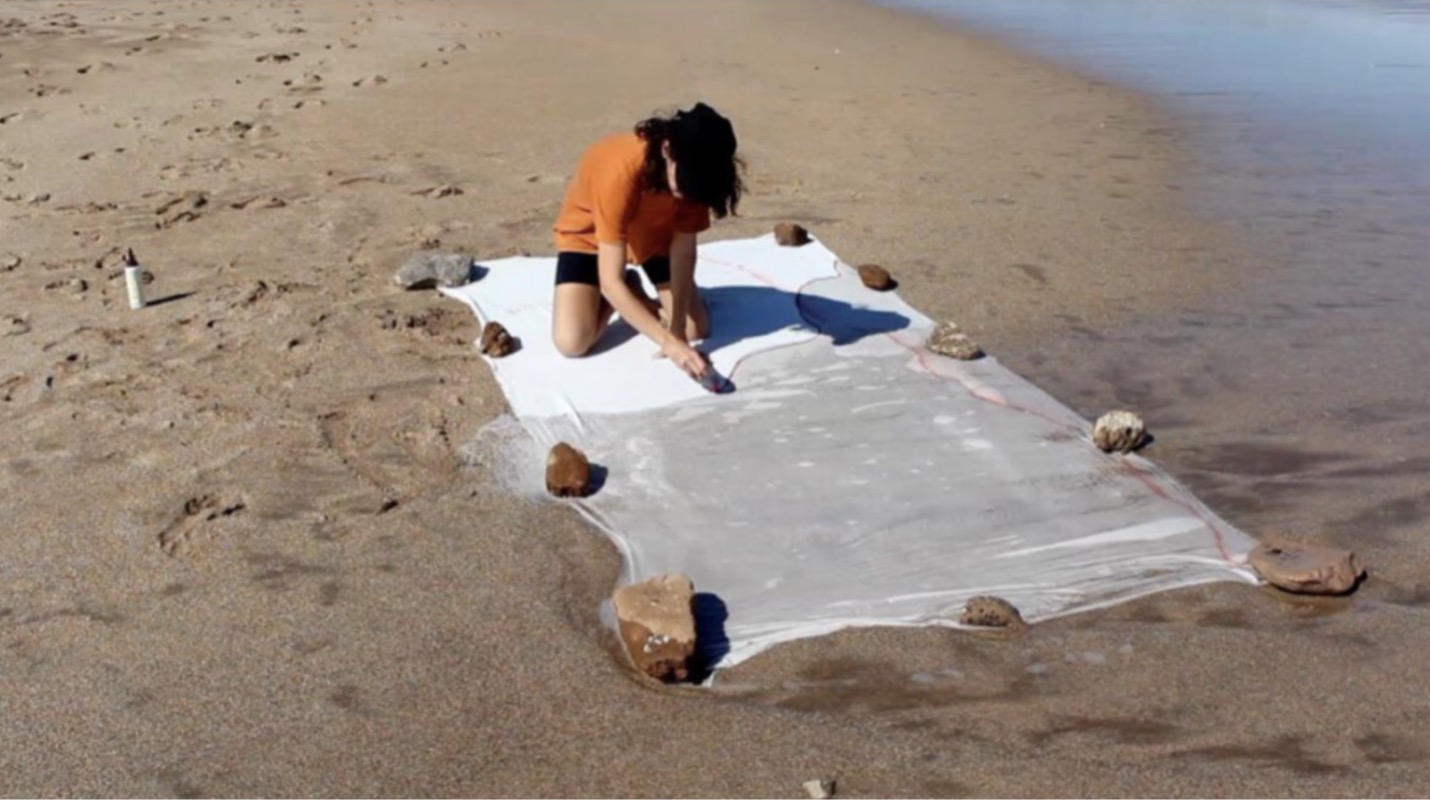Our galleries are ever-changing, with new installations occurring each month throughout the museums. This fall, we’re welcoming rarely seen works of art into our galleries and celebrating diverse materials and styles.
Collections in Motion: What’s New on View

Spiritual Relief
In the mid-20th century, artists Ann Parker and Avon Neal traveled throughout New England creating rubbings of 17th- and 18th-century gravestones. They made the rubbings by affixing paper to the gravestones and then applying layers of various colors of ink with a silk pad.
Four rubbings currently on view in Gallery 2240 come from different Massachusetts burial grounds and demonstrate a variety of styles. The oldest gravestone, inscribed with a deceased date of 1698/9, was made for Timothy Lindall of Salem. It features depictions of a skeleton and Father Time, along with an hourglass—all recognizable emblems of the transience of life.
See Ann Parker and Avon Neal’s grave rubbings in Gallery 2240 through January 26, 2025.
Garden Paradise
In the Islamic world, gardens have traditionally been an integral part of palatial, religious, and funerary architectural complexes and are often compared to paradise in literature. In the Qur’an, paradise is promised to believers as a beautiful garden to rest and enjoy, with four flowing rivers of clear water, non-intoxicating wine, pure honey, and milk, as well as aromatic plants and fruit-bearing trees. During the Islamic era, gardens in Iran and Central and South Asia merged this idea of a four-river paradise with the ancient Persian cross-axial garden to form a four-part garden design known as the chahar bagh.
In a new installation in Gallery 2550, a Persian garden carpet featuring flowering trees, plants, and fish evokes this design.
The garden carpet is part of a larger garden-themed installation in the Islamic and South Asian art galleries (2550 and 2590). The carpet will remain on view through October 2025.
Shahn’s Storefronts
Ben Shahn was fascinated with the visual culture of storefronts—their displays, signs, shopkeepers, and crowds. Though best known for his contributions to Social Realist painting and the graphic arts in mid-20th-century America, Shahn was an important photographer who captured everyday life during the Great Depression. He first photographed in his hometown of New York, but thanks to assignments from the New Deal’s Resettlement Administration, he traveled throughout the South and Ohio to document communities across lines of race, class, and nationality.
Though government agencies frequently used his photographs in publications, Shahn generally regarded them as source material for his paintings, murals, and works on paper. A terrific example of this visual translation is his painting Three Men, which presents a Greek merchant, a Greek American businessman, and an African American worker, inspired by his photograph taken on the Lower East Side a few years before.
Compare Three Men with its photographic source material and see 15 of Ben Shahn’s storefront photographs in Gallery 1320. These works will be on view through April 13, 2025.
Follow @harvardartmuseums on Instagram to hear even more about new additions to our galleries!
Tara Metal is the Digital Content Manager and Strategist at the Harvard Art Museums.



